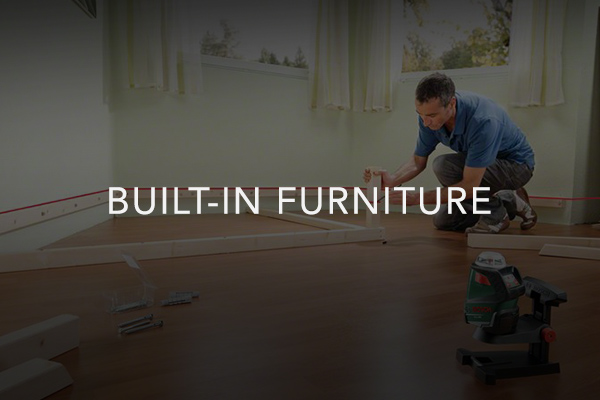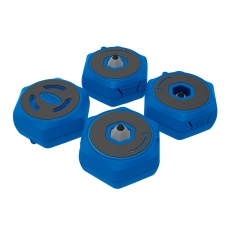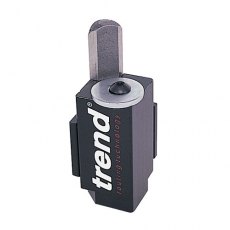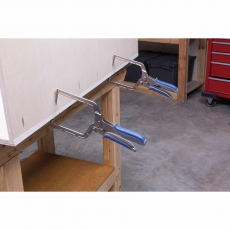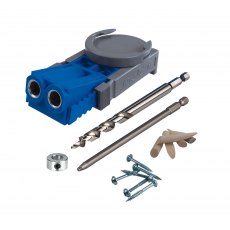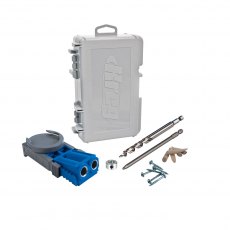DIY - A Beginners Guide
If you've got just a little know-how and a can-do attitude, you could save yourself a fair penny by not hiring the professionals and having a go yourself. Here at ToolStoreUK, we supply both professional tradesmen and DIY enthusiasts the very best tools to get the job done. In this guide we recommend the tools you might need across all areas of home improvement and maintenance, from plumbing to electrics, general building work and carpentry.
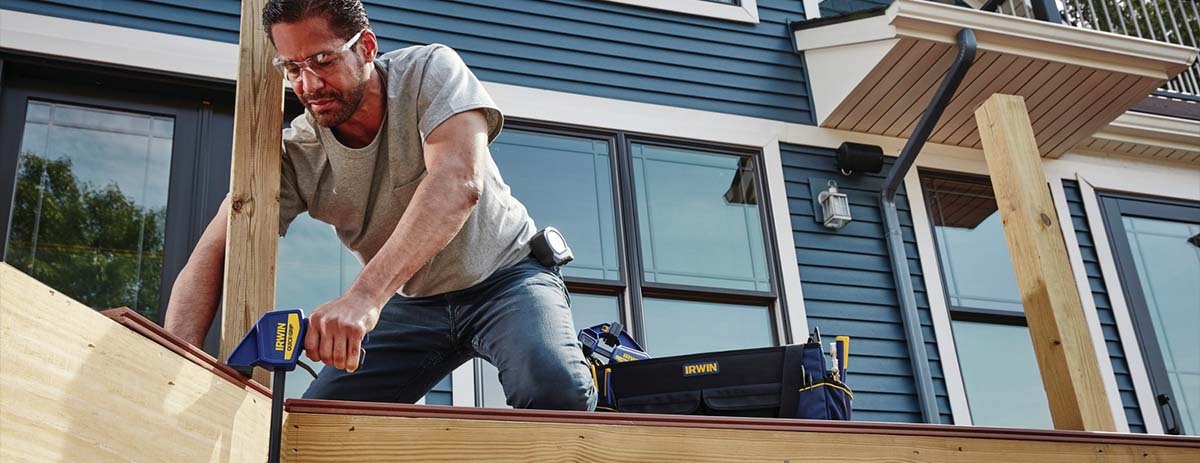
Before I Start DIY Work
Consider the equipment you'll need
There are lots of home improvement projects that require just a few basic tools, and most of those you might already have from previous projects. If, on the other hand, you'll be requiring lots of new specialist equipment, it might be worth weighing up the cost of those against the price of hiring a professional.
Consider the complexity
There are many excellent tutorials available on YouTube, with thorough and detailed explanations on how to complete simple DIY repair tasks through to far more ambitious home renovation projects. While this infomation is useful, know your limitations. Challenge yourself, but if you're feeling overwhelmed it's probably time to call a professional.
Consider the consequences
It's always a good idea to consider the worst case scenario. If things go wrong, what's the worst that could happen? Electrics can be dangerous to tinker with if you don't know what you're doing. And if you're working on a plumbing task and you only have one bathroom, make sure you've made arrangements for the household if things were to take a little longer than expected!
Consider the cost
In the majority of cases, it's going to work out a lot cheaper to do it yourself. YouTube host some excellent tutorials for a whole range of DIY tasks and projects. And at ToolStoreUK we have a wide range of professional, quality tools at competitive prices to help you get the job done yourself.
We've put together a useful list of recommendations for tools you might need and when you might need them.
What type of DIY tools will I need?
You may already have a dedicated cupboard or shelf stocked with your DIY essentials, like a hammer, tape measure, screwdriver set and saw. But if you’re looking to tackle some bigger projects effectively you’ll want a few power tools too. Power tools help get the job done more efficiently and, in many cases, with a more professional finish.
If you need more information on this, ToolStore UK have also written a short guide on which tools you'll need for your first toolbox here.
Invest in a value-for-money cordless combi kit
Cordless kits are a great way to build up your DIY tool collection. Offering fantastic value for money, many feature the popular impact wrench and combi drill with interchangeable batteries, and may include accessories like storage and radios!
We stock a wide range of cordless combi kits from leading brands including DEWALT, Makita, Milwaukee and Bosch, with the smaller kits starting at around £100.
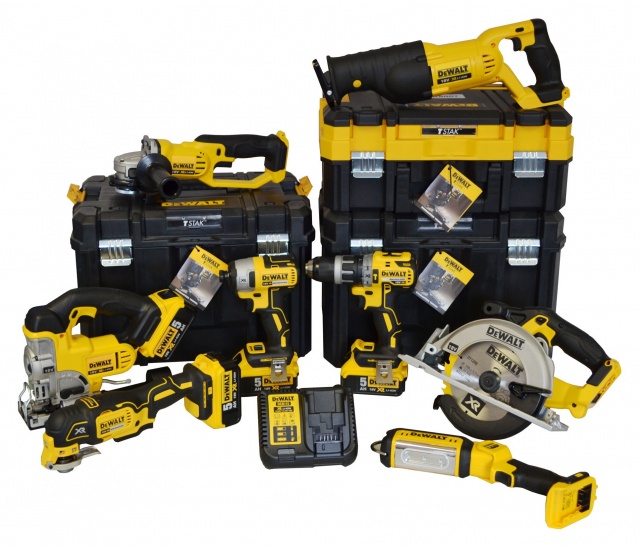
Which Power Drills Do I Need?
Whether you're finally getting round to hanging those pictures in the lounge or refitting yourself a whole new kitchen, a good drill is a must-have piece of equipment. From boring holes to driving screws, it is arguably one of the most essential tools you can have.
We have a range of drills to suit a variety of tasks and budgets.
Combi Drills
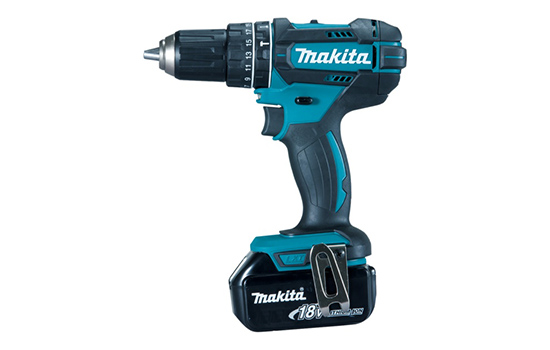
With the right bits, a combi drill can be used for drilling and screwing into a wide range of materials including wood, metal, ceramic and masonry. This versatility makes them ideal for DIYers who want maximum functionality from a single tool.
Shop Combi DrillsHammer Drills
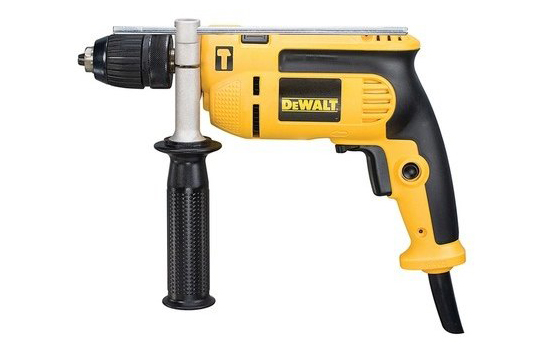
Hammer drills feature a hammer action for hard-going masonry work. If you live in a flat with plasterboard walls you may not need that additional power, but for hanging shelves or fixing guttering you'll need that extra strength.
Shop Hammer DrillsAngle Drills
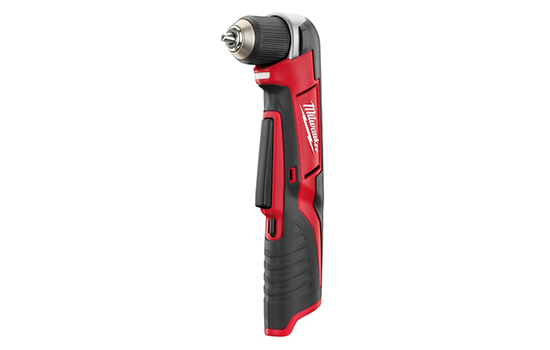
Some drills can be fairly large and sometimes you need to drill a hole or drive a screw in a small or awkward area. That is where right angle drills come into play. The head sits at a right angle to the body, reaching into spaces other drills can't.
Shop Angle DrillsDiamond Core Drills

If you need to drill even, round holes to accommodate plumbing utilities, electric wiring, or to create a drain hole in your garage or driveway, you'll need a diamond core drill. Due to its strength, diamond is the most common material used in core drill bits.
Shop Diamond Core DrillsWhat Types Of Saw Do I Need?
You’ll need a saw for most DIY projects, especially if you are building furniture. Power saws come in all shapes and sizes. The one you'll need will depend on the type of cut you need to make. Below are the most common types of power saws you may need for your DIY project. We stock saws from many of the leading power tool manufacturers including DEWALT, Bosch, Makita and Milwaukee.
Circular Saws
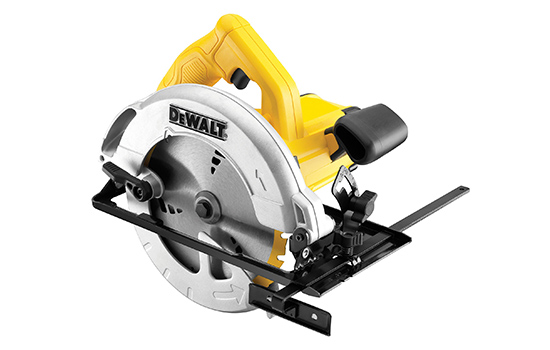
Circular saws have been a staple in every serious DIYers toolbox for many years. Ideal for precise rip and mitre cuts in solid wood, hard fibre boards, chipboard or wood core plywood, circular saws are a serious piece of kit and should be handled with great care.
Shop Circular SawsJigsaws

Whether you're cutting into wood or ceramic, a jigsaws versatility makes it an ideal choice for DIYers looking to get a lot done with a single power saw. It can make curved, straight, and plunge cuts (that don’t have to start at the edge of a material), and angled bevel cuts for bevelled edges.
Shop JigsawsMitre Saws
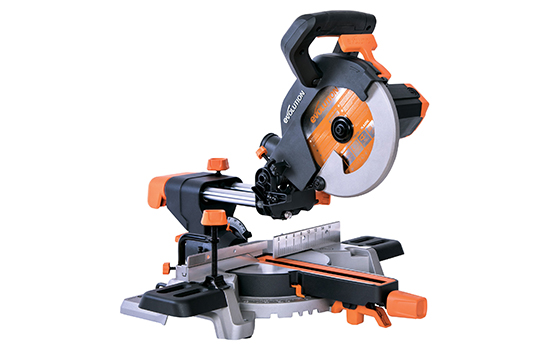
A basic mitre saw is ideal for basic DIY projects, such as skirting boards, door frames and small woodwork projects. Whether you'll need some of the more advanced features will depend on how often you will use the saw and how complex your task at hand.
Shop Mitre SawsReciprocating Saws
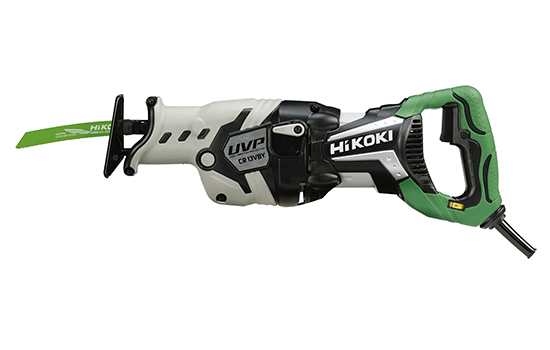
More serious DIY projects may require the power of a reciprocating saw. Whether it's powerful cuts in renovation and conversion work, sawing plastic pipes, demolition work or even chopping branches in the garden, a reciprocating saw will beat struggling with hacksaws and crowbars.
Shop Reciprocating SawsWhat Other Power Tools Do I Need?
From renovating your home to building your own furniture, there is little more satisfying in life than taking on a DIY task and completing it. And having the correct tools for your DIY projects isn't just going to get the job done to a better standard. By making these tasks easier to complete, you'll enjoy the process much more and be inspired to carry on and take on more ambitious tasks. It also reduces frustration that may ultimately cause you to give up.
At ToolStoreUK we offer you those high-quality tools you can trust from leading manufacturers such as DEWALT, Milwaukee, Bosch and Makita.
Nail Guns and Staplers
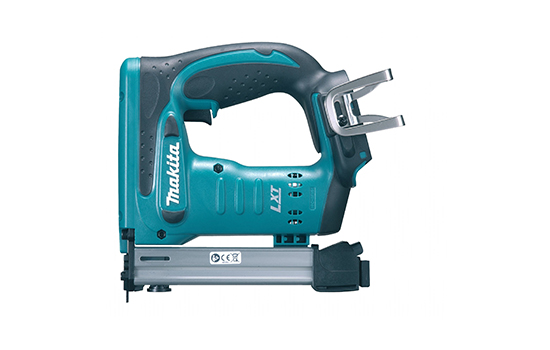
Make quick work of tasks like applying skirting boards with a nail gun or stapler. They use short, powerful bursts of gas or compressed air to fire nails and fixings. For more major DIY jobs, such as loft conversions and extensions, a decent nail gun is an essential not a luxury.
Shop Nail Guns and StaplersGrinders
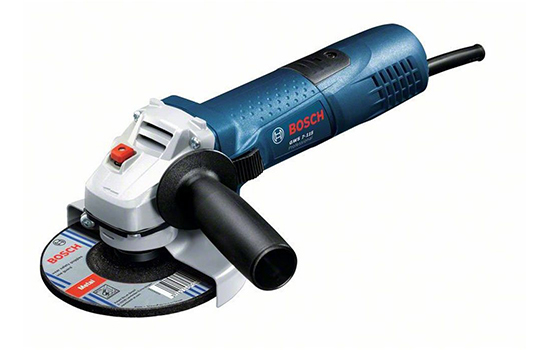
With different attachments and discs available, angle grinders are handy for a variety of applications. From grinding and cutting to cleaning and polishing surfaces, an angle grinder will deliver a professional finish to your DIY projects.
Shop GrindersSanders

Hand sanding can be a tedious chore. With an electric power sander, the task can be done quickly, simply and professionally. There are several types and sizes available but the three most versatile types are the belt sander, orbital finishing sanders and random-orbit sander.
Shop SandersRouters and Trimmers
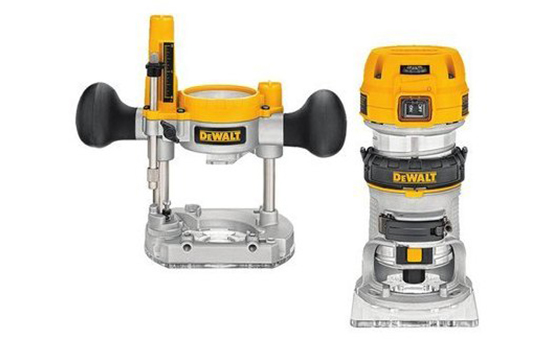
From building furniture to creating custom joinery and trims, a router cutter is a highly versatile tool used to shape wood. Create joints and hollow out materials with ease, as well as cutting mortises, slots and dovetails.
Shop Routers and TrimmersLaser Levels
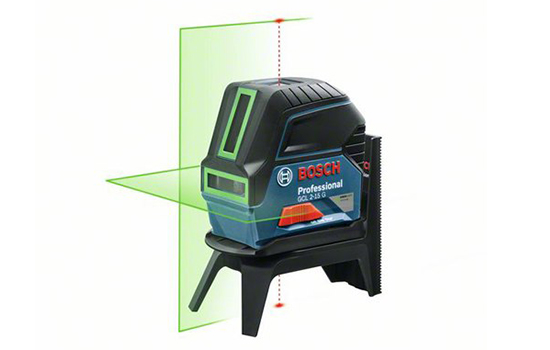
Laser levels project a constant horizontal or vertical line of light onto a surface. Using a spirit level or pendulum level, they offer you accuracy when hanging pictures or fitting dado rails to the wall of a room.
Shop Laser LevelsLights and Torches
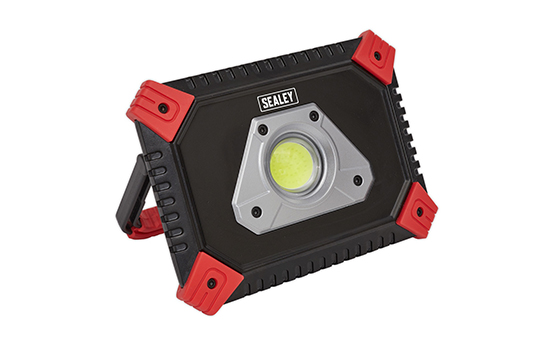
Whether it's mains or battery powered, hand-held or freestanding, our range of torches and worklights make working in dark spaces much easier. Our range includes the latest in LED technology and a selection of sizes, shapes and light outputs.
Shop Lights and TorchesElectric Screwdrivers
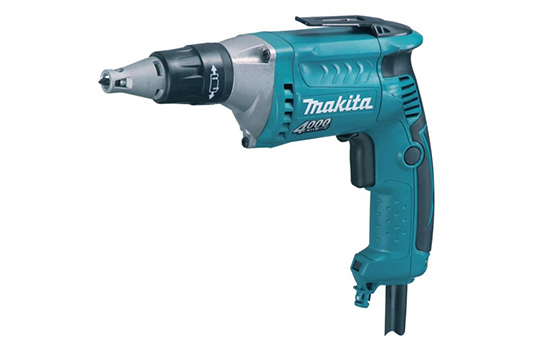
Lightweight and compact, an electric screwdriver is a must-have for the household toolbox. From hanging pictures, fixing a loose screw to tackling those flat-pack furniture tasks, our wide range of electric screwdrivers make DIY tasks easier.
Shop Electric ScrewdriversLawn Mowers
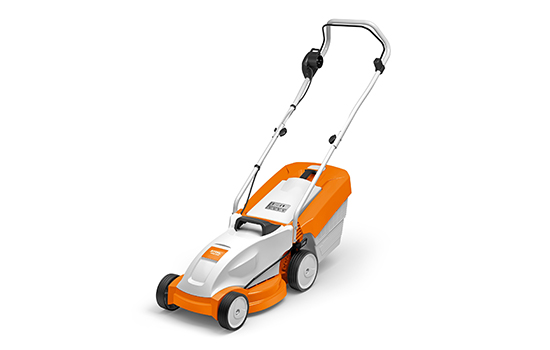
Make sure you're spending more time on the sun lounger and less time working hard! We have a wide range of electric and petrol lawnmowers perfect for keeping your garden looking neat and tidy with minimal effort.
Shop Lawn MowersWhat Type of Hand Tools Do I Need?
Hand tools are useful for all types of DIY tasks. When using hand tools, precision is much more important than speed of work. We stock a wide range of high-quality hand tools from the leading brands.
Tape Measures and Levels
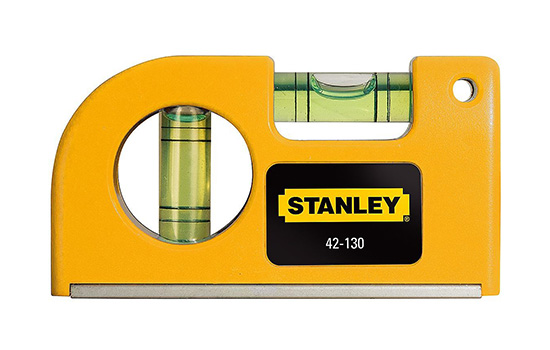
Get your measurements spot on from the outset with our wide range of quality measuring tools.
Shop Measures and LevelsClamps and Vices
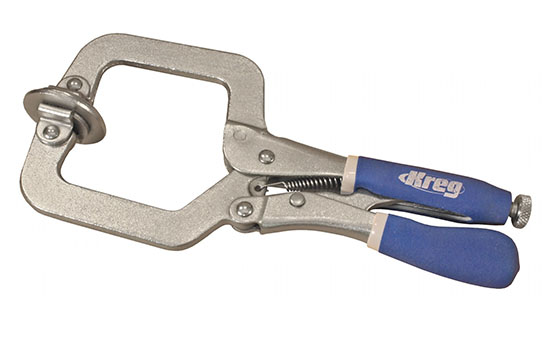
Holding your workpiece securely is essential for accurate and precise results.
Shop Clamps and VicesSpanners and Wrenches
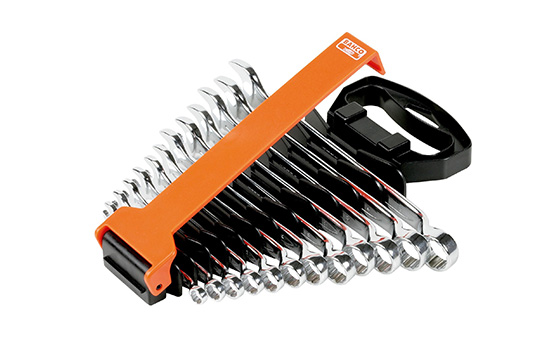
There are numerous types of spanners and wrenches for a variety of different uses.
Shop Spanners and WrenchesScrewdrivers
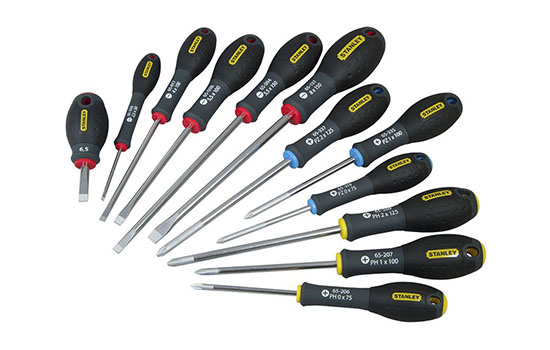
There are many situations in which there's no substitute for a hand-driven screwdriver.
Shop ScrewdriversSTORAGE
Keep your tools safe and tidy with our wide range of tool kits and organisers.
Shop Tool Kits and OrganisersDIY PROJECT IDEAS
Home repairs and renovations can be expensive, so we've put together some projects you can do yourself and save yourself a lot of money. From built in furniture solutions to updating your bathroom, check out these home DIY projects for some inexpensive ways to update and improve your home this weekend.
BUILT-IN FURNITURE
Built-in furniture is an elusive, coveted feature that usually only exists on Pintrest or in expensive custom homes. But with a little bit of planning and some good-quality tools, you can accomplish this at home. The installation process can sometimes be complex and time-consuming, but the finished product is nearly always worth the effort.
If you’re thinking of adding some built-in storage or furniture, you’ll want to make sure that you go into it with a well-thought-out plan so ask yourself the following:
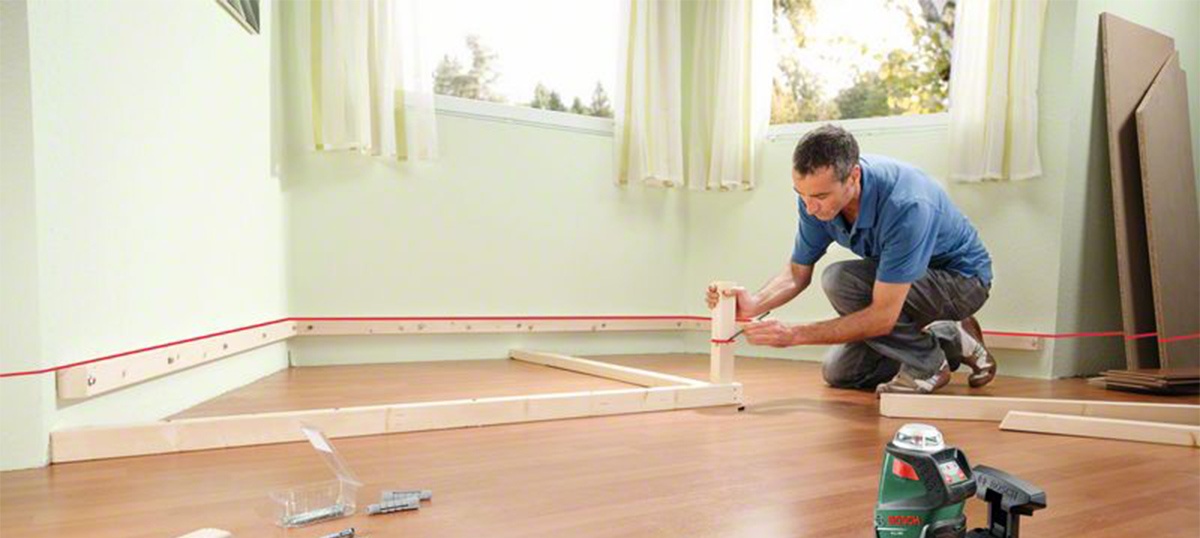
What are you using it for?
Before you start, have a clear idea of how you intend to use the furniture. If you are creating an area for storage, look at all the items you want to store in the space, how you want them stored and measure out the space they'll need accordingly.
Where are you placing it?
Once your built-in furniture is in place, you won’t be able to access the area behind it easily. Check that you won’t be blocking any vents or doorways before installation so that you don’t run into problems later on.
How will it look?
Although the furniture is going to be a new addition to your home, it should blend in and ideally look like it's been there all along. We often think of either rectangular or square spaces, but how about rounding some corners or creating something more angled.
What tools will I need to build built-in furniture?

GARDEN MAKEOVER
It's easier than you think to give your garden a makeover. Sometimes even small projects and changes make a big impact on your garden and breathe new life into it. By taking on a few do-it-yourself tasks, you can transform your garden from ordinary to a sanctuary you actually want to spend time in.
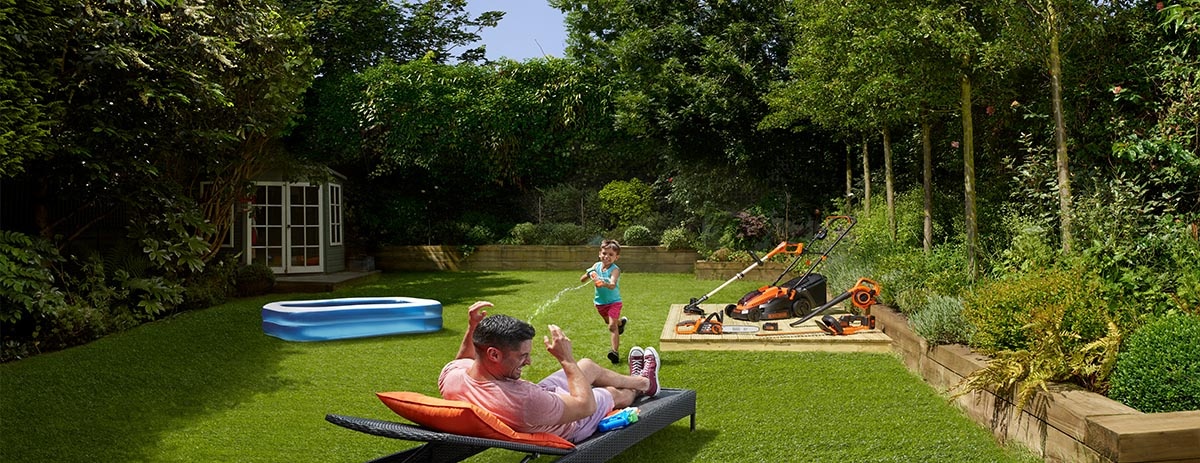
Love your lawn
Mowing your lawn will promote growth and keep it looking great. But it’s important to know when to cut it and how to cut it properly. Many lawn problems are a result of poor mowing practices, from mowing too short, mowing with dull blades, mowing infrequently, or cutting too much at once. Finish by creating a sharp, smart edge with your strimmer.
Tools you might need...
Our top tips:
- only cut the top 1/3 of the blade length at any one time
- mow a dry lawn in the early evening
- vary your mowing direction
- leave grass clippings on your lawn
- ensure your lawnmower blades are sharp
Tidy hedges and trees
Pruning is a job that can be done by hand with shears, but using a chainsaw is a much more efficient method in some cases. Trimming not only creates a smooth, attractive finish, it also plays a huge part in maintaining a healthy garden. Learning the correct techniques for shrubs, hedges and trees will ensure you get the best out of your chainsaw.
READ NEXT: How To Plaster A Wall - Step-By-Step Guide
What tools will I need to tidy up my garden?
Our top tips:
- Prevent injury with safety goggles, hearing protection, a hard hat and high-quality gloves
- Use on overgrown or well-established shrubs
- Prune trees in winter when there’s less foliage in the way
- Prune hedges annually, ideally in early springtime, to prevent them losing shape
- Read the instructions and familiarise yourself with the chainsaw safety features!
Create a vegetable patch
There are loads of reasons to build a raised vegetable garden. Regardless of the soil conditions in your garden, you can provide the perfect conditions for all the healthy vegetables you’d like to grow with a raised garden box. Requiring less effort than digging an in-ground plot, a raised box will keep your produce safe from pets and children.
What tools will I need to create a vegetable patch?
Our top tips:
- Ensure your planter contains at least 6 inches of soil
- Line your box to make it more durable and prevent toxins from contaminating your soil
- For longevity use rot-resistant woods, like oak, cedar or redwood
- Build your planter somewhere that receives at least five hours of sunlight daily
- Your raised planter will have fantastic drainage, which is great for plant health, but ensure your plants don’t dry out by giving them a long drink in the early evening
CREATE AN OPEN PLAN LIVING SPACE
Open plan living is far more suited to modern living than a warren of corridors and smaller rooms. Merging rooms together can allow more light and space into your home. If your kitchen is separated from a dining or living room by a wall, consider removing the wall to create your open plan living area. Cupboards and hallways also harbour hidden square footage so have a think about how you could use these too.
It’s a big job and it’s not right for every home. But in some cases, learning how to knock down a wall is a fantastic opportunity to really open up a home. Although knocking down a wall is a common task in a house renovation project, it is important to plan thoroughly, and ensure your property remains structurally sound.

Do I need permission to knock down internal walls?
Knocking down internal walls may fall under permitted development rights but be sure to check with your local authority. You will almost certainly need planning permission if you live in a listed building. You may also need to make a Building Regulations application who will visit you to inspect the work and, providing you fulfil the requirements, issue a certificate.
Will I need an RSJ for the wall I'm taking down?
When removing a loadbearing wall – where a wall above is being supported by the wall beneath – it is necessary to insert a suitable lintel or beam or some other supporting structure. Contrary to popular belief, tapping a wall to see if it sounds hollow is not enough to know. A structural engineer will be able to advise you if an RSJ (rolled steel joint) is required and provide the necessary calculations.
Removing A Wall
Preparing To Remove A Wall
If there are sockets on your wall, it contains electrical wiring. If there is a vent, it contains HVAC ducts and pipes. If the wall supports a sink, bath, toilet or washer/dryer then it contains plumbing. It is always advisable to call in the professionals when removing or re-routing plumbing and wires. If your home was built before 1978, you should also have your walls checked for asbestos and lead paint before you start knocking them down. Knocking down a wall will create a lot of dust and debris so prepare the rooms on both sides of the wall you are removing. Lay down a protective cover, like tarp or plywood, and cover vents, windows and doors to protect them. Protect yourself too! Wear long sleeves and trousers, sturdy shoes, goggles, a dust mask and work gloves.
Knock down the wall
Work methodically. Start by removing the skirting board and put in wall supports and props and boards. Remove the plaster and masonry before lifting the beam or RSJ onto the side bearings, making sure it’s level. For a partition wall that doesn’t bear any weight, you need to take out the plasterboard and brickwork you don’t want.
Finishing up
The next step is to hide all evidence that a wall has been removed. Consider new flooring to run the full length of the new space or match up tiles and floorboards for a seamless finish. Walls may need plastering and patching, as will the ceiling. Finally, enjoy your new open plan living space!
READ NEXT: How To Mount Your TV To A Wall
Read More From ToolStore UK
DeWalt vs Makita - The Complete Guide
Read MoreHow To Use A Power Drill
Read More


